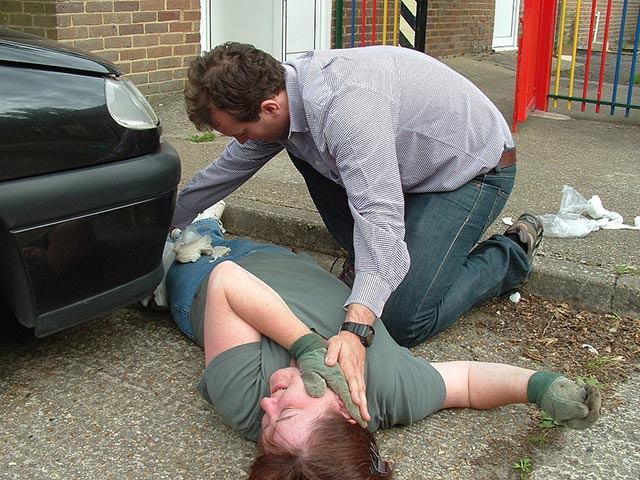Basic First Aid
The Basic First Aid was created to help students develop basic first aid knowledge, skills, and the confidence to respond. The program is an excellent choice for both the community and workplace setting and is consistent with recommendations of the 2010 National First Aid Science Advisory Board and OSHA’s best practices for first aid training programs in the workplace.
Participants develop Basic First Aid knowledge, skills, and the confidence to respond to emergencies.
An objectives-driven, skills-based program that covers emergency response, severe bleeding and shock, soft-tissue injuries, bone, joint, and muscle injuries, medical emergencies, heat and cold-related illness and injury, and more. This is an excellent course for most communities, organizations, groups and individuals seeking to gain proficiency is handling First Aid necessities during an emergency while professional help is on the way.
Intended audience
Individuals who require or desire elementary first aid knowledge and skills, including emergency response teams in business and industry, school bus drivers, adult residential care personnel, childcare workers, teachers, parents, and babysitters.
- Construction workers
- Litter van drivers and attendants
- School personnel for field trips
- Security Guards
- Amusement park employees
- California Child Welfare and Mental Health
- Alzheimer's Day Care Staff
- General students and school employees.
- Coaches and trainers
- Acupuncturists
- Community Care Faculty
Class options
None (covers all ages)
ASHI-approved training materials
- ASHI Basic First Aid Student Handbook (one per participant, print or digital)
- ASHI Basic First Aid media presentation (program video, PowerPoint ® , or computer/online blended class)
Successful completion (certification)
- Written evaluation: Required when specified by organizational, local, or state regulation. It is recommended for designated responders with a duty or employer expectation to respond in an emergency and provide first aid care.
- Performance evaluation: All students must perform required skills competently without assistance.
Recognized certification period
Up to 2 years
Recommended time to complete
- Initial training: 2–2.5 hours
- Renewal training: Less than initial instructional time
Combine with:
CPR and AED
[/x_columnize][/x_accordion_item][x_accordion_item parent_id="add-info" title="Topics Covered"][x_columnize]
Class topics
- First Aid Provider
- Legal Considerations
- Recognizing an Emergency
- Deciding to Help
- Personal Safety
- Disease Transmission and Universal Precautions
- Emergency Medical Services (EMS)
- Primary Assessment—Unresponsive
- Unresponsive and Breathing—Recovery Position
- Primary Assessment—Responsive
- Secondary Assessment
- Control of Bleeding
- Internal Bleeding
- Managing Shock
- Amputation
- Impaled Object
- Open Chest Injury
- Open Abdominal Injury
- Head, Neck, or Back Injury
- Heat Emergencies
- Cold Emergencies
- Emergency Moves
- Emotional Considerations
- Swollen, Painful, Deformed Limb
- Impaled Object in the Eye
- Chemicals in the Eye
- Nosebleed
- Injured Tooth
- Burns
- Sudden Illness
- Altered Mental Status
- Stroke
- Diabetic Emergencies
- Seizure
- Breathing Difficulty, Shortness of Breath
- Asthma
- Severe Allergic Reaction
- Pain, Severe Pressure, or Discomfort In Chest
- Severe Abdominal Pain
- Poisoning
- Bites and Stings
Optional program content
- Tourniquets
- Splinting
- Metered-Dose Inhalers
- Nebulizers
- EpiPen ® Auto-Injectors
[/x_columnize][/x_accordion_item]
[sc name="no-show-notice"]
Disclaimer For Classes
NOTICE: If you no-show on your scheduled class, we will reschedule you to another class without charge. If you no-show for two classes in a row then you will be required to re-register for the course.
